Become a Partner
Add OffSec to your list of training providers
Partner with us
OffSec Wins Seven Global InfoSec Awards during RSA Conference 2024
Read blogWeb application security encompasses the protection of web applications from vulnerabilities, threats, and attacks that can compromise their integrity, confidentiality, and availability. It involves implementing security measures and best practices to ensure the safety of the application itself, the data it handles, and the users who interact with it.
Web applications are dynamic and interactive platforms that facilitate various functions like online forms, user registrations, e-commerce transactions, and data processing. However, they can also be susceptible to security risks if not appropriately safeguarded.
Common web application vulnerabilities are security weaknesses and flaws that attackers can exploit to compromise the security of web applications. Some of these vulnerabilities include:
SQL Injection occurs when attackers manipulate input fields to inject malicious SQL queries into an application's database. If not properly handled, this can allow attackers to access, modify, or delete data, bypass authentication, and even gain control over the database. Preventing SQLi involves input validation, using parameterized queries, and employing web application firewalls (WAFs) to filter and block malicious SQL queries.
Cross-Site Scripting involves injecting malicious scripts into web pages that are then executed by users' browsers. This can lead to theft of sensitive information, session hijacking, or defacement of websites. XSS vulnerabilities can be mitigated by validating and sanitizing user inputs, encoding output data, and implementing security controls to prevent script execution.
CSRF attacks trick users into performing unintended actions without their knowledge, using their authenticated session. Attackers exploit the trust users have in a website to manipulate actions like changing account settings or making financial transactions. Preventing CSRF involves implementing anti-CSRF tokens and ensuring that sensitive actions require user confirmation.
Security misconfigurations arise from improperly configured security settings, default credentials, or unnecessary features left enabled. Attackers can exploit these misconfigurations to gain unauthorized access, expose sensitive data, or execute malicious actions. Regular security audits, adhering to secure coding practices, and using secure defaults can help prevent security misconfigurations.
Sensitive data exposure occurs when applications fail to adequately protect sensitive information such as passwords, credit card numbers, or personal data. Attackers can exploit this weakness to steal valuable data. Proper data encryption, hashing, and secure storage practices are essential to prevent sensitive data exposure.
XXE attacks target vulnerabilities in XML parsers, enabling attackers to read internal files or execute arbitrary code. Attackers send malicious XML payloads that exploit the parser's behavior. Preventing XXE attacks involves disabling external entity processing, validating input, and using strong input sanitization techniques.
Insecure deserialization vulnerabilities occur when applications unserialize untrusted data, leading to code execution or other malicious activities. Attackers manipulate serialized objects to execute unauthorized code. Preventing this vulnerability requires input validation, using safe serialization methods, and employing runtime protections.
OffSec’s industry-leading web app security training provides individual learners and teams with essential knowledge to discover and exploit common web vulnerabilities and to exfiltrate sensitive data from target web applications and advance their careers with our acclaimed certifications.
Secure development encompasses the practice of developing applications with security in mind from the beginning of the development process. Developers must follow best practices to identify and remediate security vulnerabilities to ensure the safety and integrity of the application. Here are some of the key roles that secure development plays in web application security:
Secure development focuses on identifying and addressing vulnerabilities before they are exploited. By implementing secure coding practices, developers can reduce the likelihood of introducing vulnerabilities such as SQL injection, cross-site scripting (XSS), and others that attackers commonly target.
Secure development employs the principle of defense in depth, where multiple layers of security controls are implemented throughout the application. This approach makes it harder for attackers to exploit weaknesses and significantly increases the overall security posture.
Developers are vigilant about keeping libraries, frameworks, and third-party components up to date. This prevents known vulnerabilities from being exploited by attackers who target outdated software.
Secure development extends to the deployment phase, where developers ensure that the application is configured securely in its operational environment. This includes setting appropriate security headers, configuring firewalls, and enabling encryption.
Secure development aligns with industry regulations and compliance standards. By incorporating security into the development process, organizations can meet regulatory requirements and protect user data.
Web application security measures refer to a collection of strategies, practices, and technologies designed to secure web applications from cyber threats and vulnerabilities. These measures are crucial for protecting sensitive data, maintaining the functionality of the application, and ensuring a secure user experience. Here's an overview of key web application security measures:
Implementing best practices for web application security is essential to safeguard against potential attacks and vulnerabilities. Here are some of the best practices that can help improve web application security:
01
Keeping web application software up to date with the most recently released versions, helps prevent potential vulnerabilities from existing in the software due to bugs, code errors, or other security vulnerabilities. Additionally, libraries and frameworks used to build web applications should be updated regularly.
02
Enforce strong authentication mechanisms to prevent unauthorized access to web applications. Password policies should be implemented to ensure strong passwords, enabling two-factor authentication where possible.
03
Secure communication channels using encryption protocols should be employed to protect users' sensitive information and transactions. HTTPS with SSL or TLS should be used for communication between the browser and the web server.
04
Implement data backup and disaster recovery mechanisms. This allows quick recovery in case of data loss or cyberattacks.
05
Enforce proper access control and authorization mechanisms to ensure that only authorized personnel can access the application's resources[1].
06
Conducting regular security audits and testing (such as penetration testing, vulnerability scanning, and code review) help identify and remediate vulnerabilities.
07
Proper error handling in web applications helps prevent potential attacks by disclosing sensitive information about the application's behavior and environment.
08
Enforce secure coding practices in the application development process. These practices contain coding guidelines to assist developers in designing and implementing secure code.
09
Ensure that developers, stakeholders, and other personnel involved in web application deployment are well-informed and trained in security awareness.
OffSec is a globally recognized and trusted provider of industry-leading training and certification for web application security. Organizations worldwide turn to OffSec to enhance the skills and capabilities of their teams in the following ways:
OffSec offers comprehensive and hands-on training, such as:
WEB: Web Application Assessment Essentials Learning Path is designed to help learners grasp the basics needed to start learning web application security. It covers tech-adjacent concepts that are pillars for any cybersecurity focus area and are valuable for upskilling technical professionals to security roles.
WEB-200: Foundational Web Application Assessments with Kali Linux with the OffSec Web Assessor (OSWA) certification provides practical, real-world training that teaches learners how to discover and exploit common web vulnerabilities and how to exfiltrate sensitive data from target web applications.
WEB-300: Advanced Web Attacks and Exploitation with the OffSec Web Expert (OSWE) certification is an advanced course that teaches the skills needed to conduct white box web app penetration tests. Learners who obtain the cert will demonstrate mastery in exploiting front-facing web apps.
At OffSec, we offer courses and learning paths for teams and individuals at all skill levels. From beginner to advanced courses, our courses and learning paths are designed to support ongoing professional development, allowing cybersecurity teams to enhance their skills continuously. Web application security training is designed specifically for job roles like Web Penetration Testers, Pentesters, Web Application Developers, Application Security Analysts, Application Security Architects, and SOC Analysts and other blue team members, as well as anyone interested in expanding their understanding of Web Application Attacks, and/or Infra Pentesters looking to broaden their skill sets and Web App expertise.
By participating in OffSec's training programs, organizations gain access to a global community of like-minded professionals. This community provides valuable networking opportunities, knowledge sharing, and support channels. Organizations can leverage this community to exchange ideas, collaborate on challenging problems, and stay connected with the latest trends and best practices in the software development field.
Get a quote
Unlimited Learning Library and Enterprise Cyber Range access, plus reassign licenses as needed.

